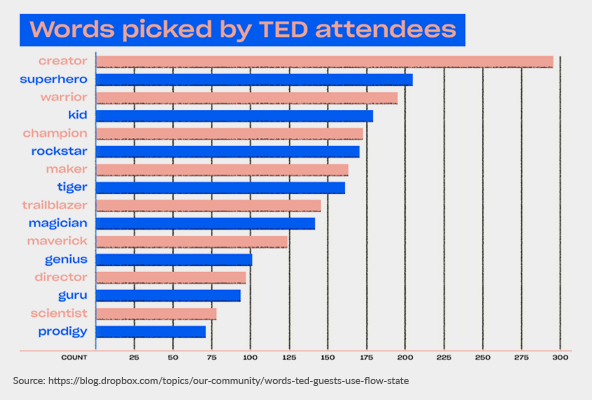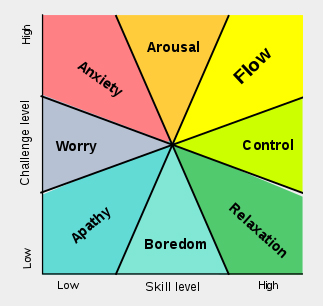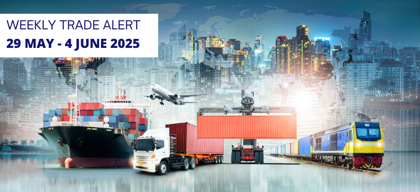How to achieve ‘flow state’ at work to enhance productivity & minimise delays

Learning & Development
306 week ago — 6 min read
Background: Flow state has been defined as one where you are so consumed by a task that you lose track of time and feel an almost zen-like sense of calm while working with complete focus and concentration. Find out more about how to achieve this state at work.
Whatever can go wrong, will go wrong, and most likely at the worst possible time” -Murphy’s Law
Delay in projects is one of the worst nightmares of any project manager. In one influential study, Bent Flyvbjerg, an expert in project management at Oxford’s business school, estimated that nine out of ten go over budget.
Often project managers start a new project and delegate tasks to the employees with enthusiasm. The project kick-starts on time but the delay creeps in at some random points and spreads across all the stages of the project. Before the project manager acts, the whole project is stuck in a rut of eternal delay and ever extending deadlines. Even if the project manager tries hard to bring the project to its completion, the sense of urgency to reduce the delay reduces the quality of the final output.
Project delay is a costly affair which affects the output of any team across all industries. It burdens the organisation with increased operational cost, lesser productivity, reduced revenue, contract termination and lawsuits from clients and vendors as well.
No matter how much time you have for a project, it will likely be consumed, and no matter how well you plan, you will always be faced with the unexpected. Being in a state of flow helps you experience a whole new way of a productivity boost.
A condition of flow state is a state in which challenges and skills are matched. Being in a state of flow helps you experience a whole new way of a productivity boost.
Also read: Focus: 5 steps to find it
“What does it feel like to be in flow — that moment where work stops feeling like work?”
This was the question, the team at Dropbox asked at TED2019. They asked hundreds of attendees, from salespeople to CEOs, to answer this question by filling in a series of blanks by choosing from a bank of 16 words. Three days and more than 2,000 selections later, they analysed which words participants had picked most.

The definition of being in a flow varies from person to person.
A condition of flow state is a state in which challenges and skills are matched. Flow researchers, such as Csikszentmihályi, believe that one can enhance and increase flow in the workplace so that people would gain ‘intrinsic rewards that encourage persistence’ and provide benefits by certain measures. He also emphasizes on finding activities and environments that are conducive to flow, and replicating the same to increase experiences of flow.
Everyone enjoys doing their best while contributing to something beyond themselves.

Mental state in terms of challenge level and skill level, according to Csikszentmihalyi’s flow model
One can achieve the state of flow in the following three conditions:
1. Goals are clear
To get into the state of flow, it is necessary to make individuals aware of the goals of their job in a comprehensive manner.
In his chapter “Why Flow Doesn’t Happen on the Job,” Csikszentmihályi says that flow does not occur when the goals of one’s job are not clear.
Some tasks may be a part of bigger plans and can be helping in achieving the goals of an organization. But the individual worker may not be able to visualise the impact of their work. This is detrimental to the state of flow and productivity.
Also read: Career value curves
2. Feedback is immediate
Immediate feedback helps the individual workers to tweak the work at an initial phase. It is frustrating to invest time on a task which gets rejected later. The lag in feedback demotivates an employee as her efforts go in vain. It also leaves the employee in limbo regarding the next course of action.
Moreover, because of little communication, an employee may not be assigned tasks that challenge them and prevent her from being in the state of flow.
3. Opportunity and capacity equilibrium
People love when they are challenged. The challenges should be aligned with the skill level of each employee.
A data scientist or a machine learning expert will be bored if she is used for software testing. A UX designer will be bored if she is deployed in an analytics team. In both scenarios, there is a mismatch in the opportunity and capacity of the individual workers. This leads to a reduction in productivity and delay in project completion.
Ensuring opportunities or tasks assigned are challenging enough based on the skills, talent, interest, and capacity of the individual workers leads to the attainment of flow state. People flourish as their achievements grow and with that comes the development of increasing “emotional, cognitive, and social complexity.” A workplace environment that allows for flow and growth can increase the happiness and achievement of employees.
Conclusion:
Frequent experiences of flow at work lead to higher productivity, innovation, and employee development (Csikszentmihályi, 1991, 2004). Finding ways to increase the frequency of flow experiences can push stakeholders of a project to work together at their best level and reduce the delay in projects.
Also read: 5 critical questions for leadership success and life happiness
To explore business opportunities, link with me by clicking on the 'Connect' button on my eBiz Card.
Disclaimer: The views and opinions expressed in this article are those of the author and do not necessarily reflect the views, official policy or position of GlobalLinker.
Posted by
Kendrick Bradney De Figueiredo MeloDigital Transformation and Social Collaboration for Businesses. Simple and Agile Digital Workplace. A seamless way to market, sell, support and manage your organization.
View Kendrick 's profile
Other articles written by Kendrick De Figueiredo Melo
Productivity in the age of information overload
301 week ago
SaaS Platform - A smart way to run & grow business
304 week ago
Most read this week













Comments
Share this content
Please login or Register to join the discussion